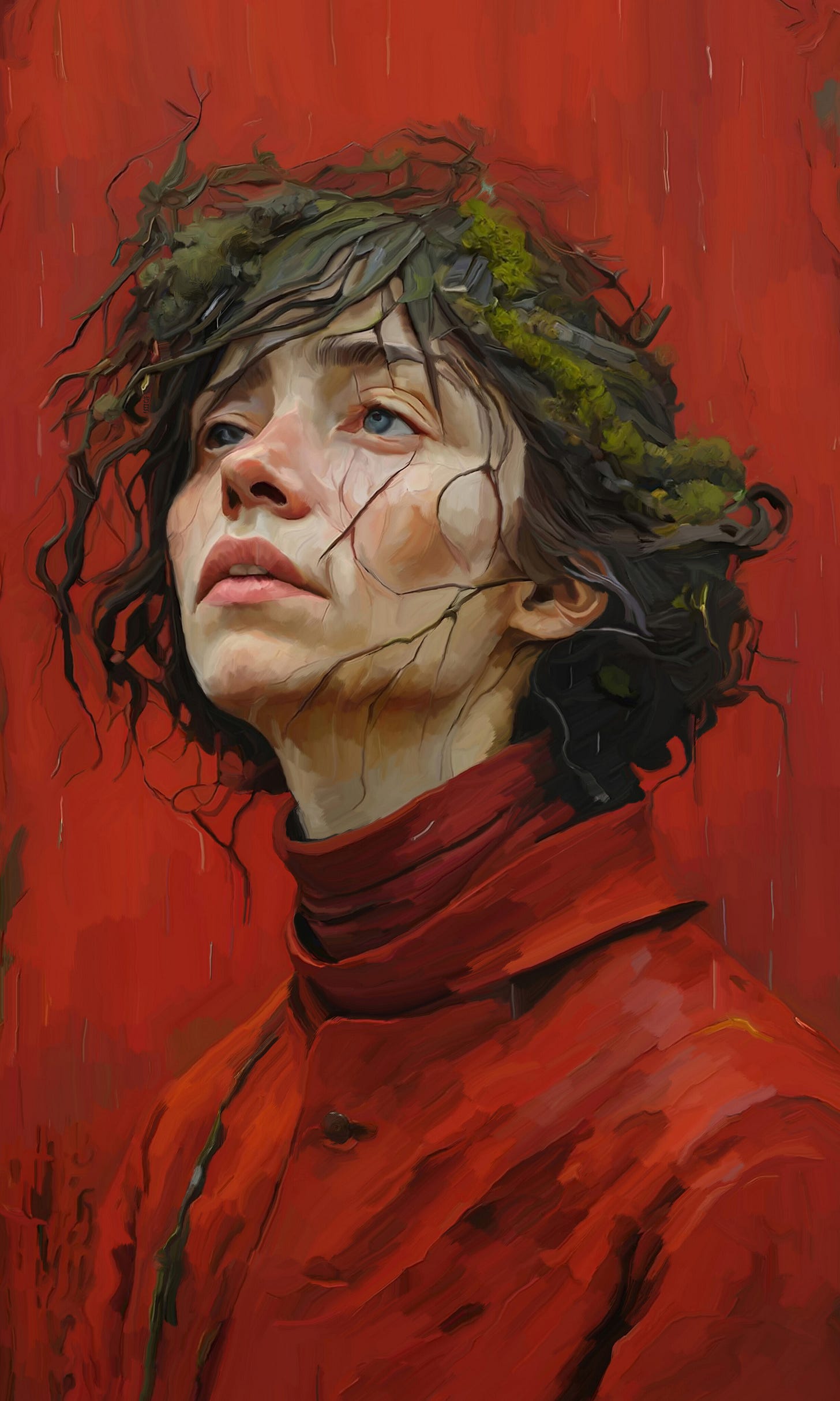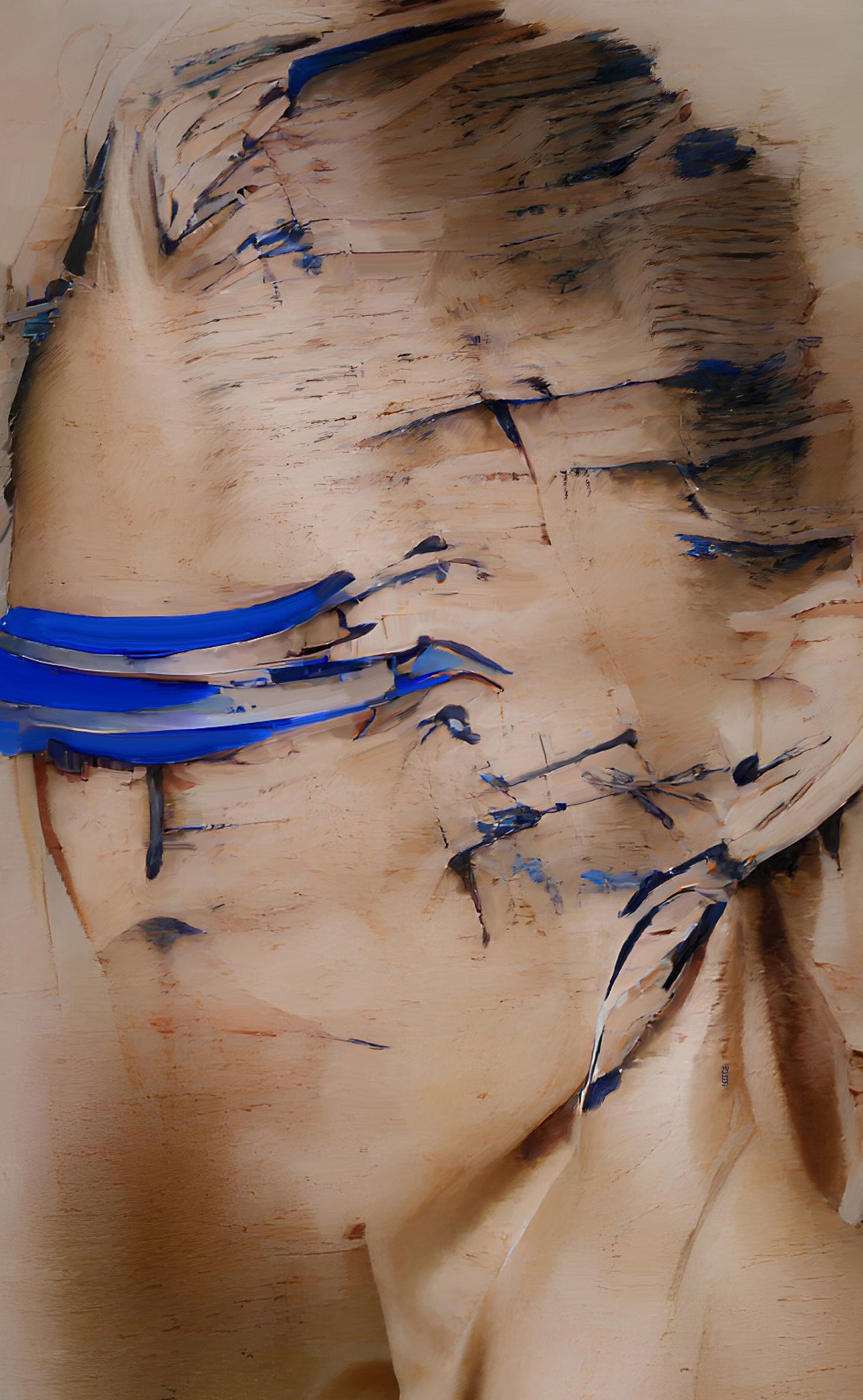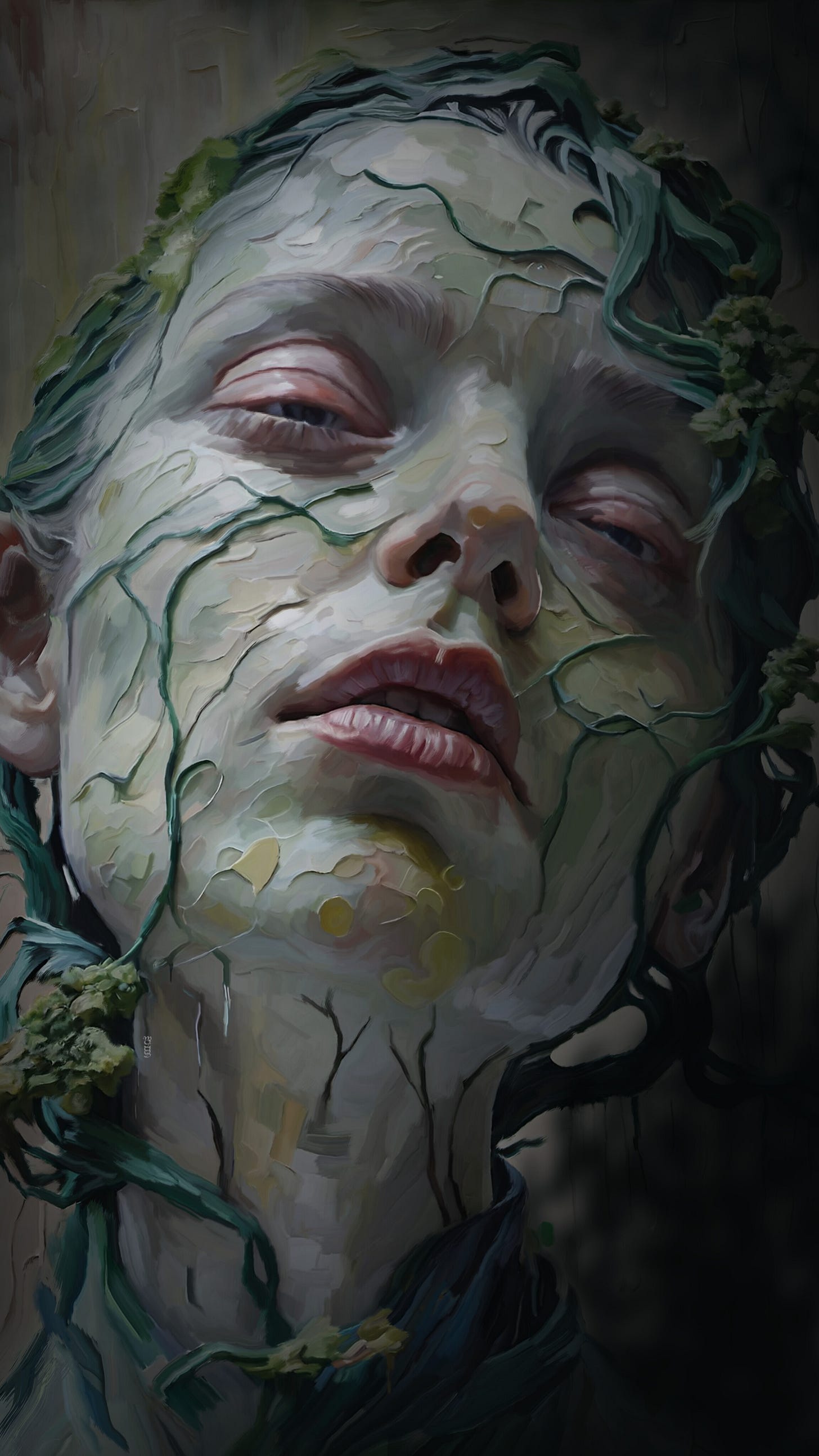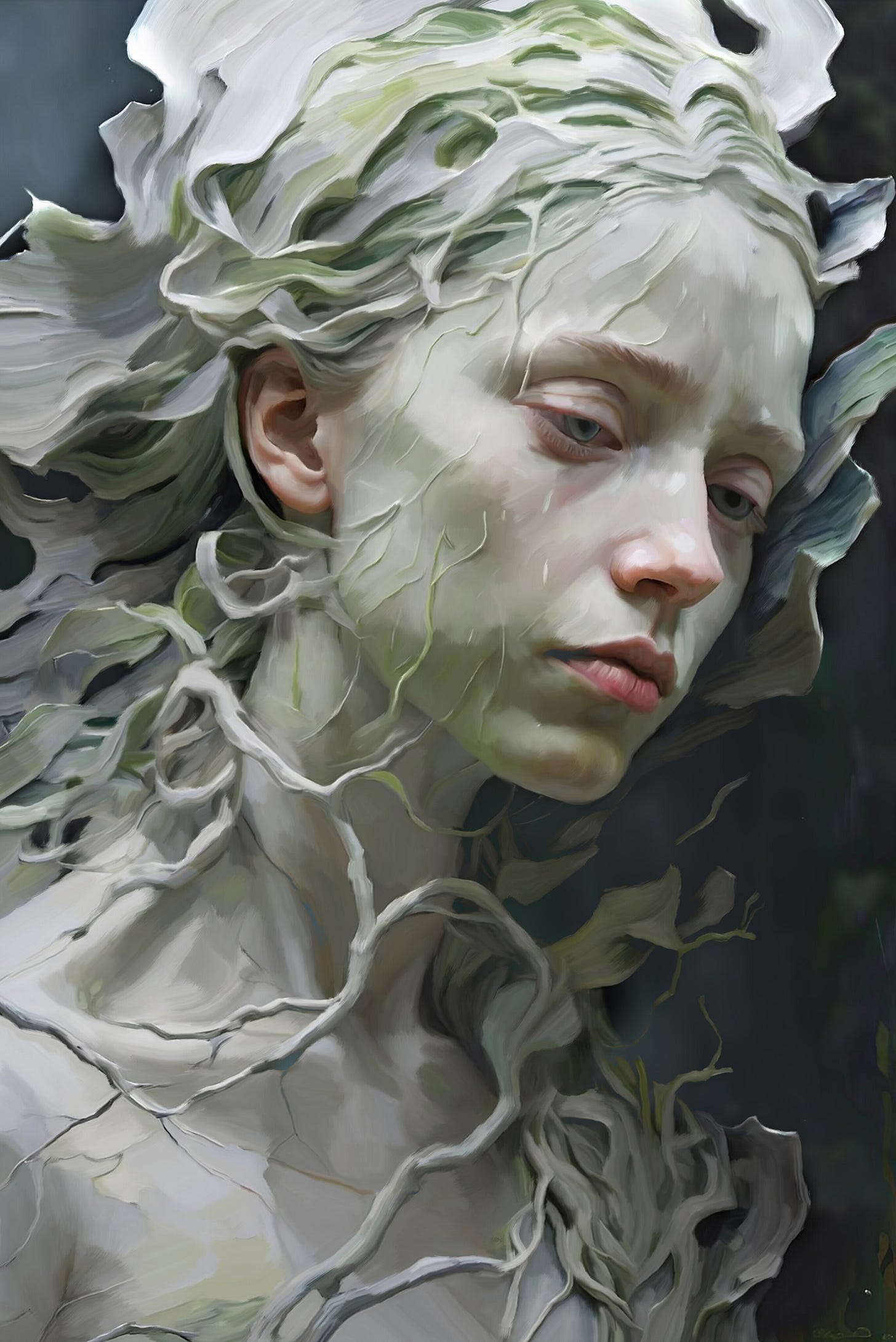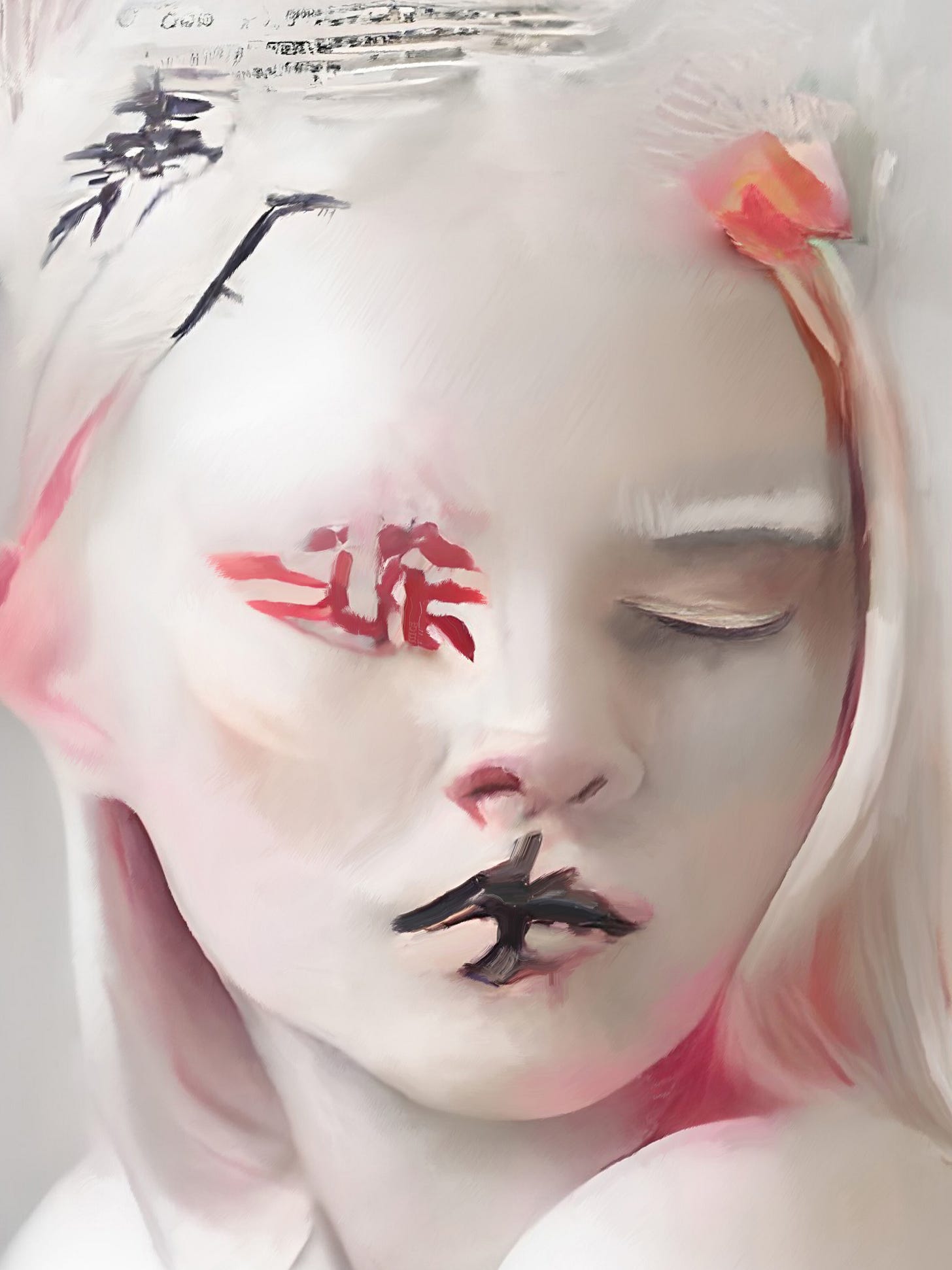NFT Edition: Molood Jannesari Redefining Art and Identity on the Blockchain
Blending Culture, Identity, and Innovation: Molood Jannesari’s NFT Journey
What happens when ancient heritage collides with cutting-edge technology? For Molood Jannesari, an artist whose work dives deep into personal and cultural narratives, this intersection is more than a meeting point. It’s a bridge. By blending her rich cultural background with the decentralized power of NFTs, Molood is redefining the global art landscape.
Through her evocative storytelling and intricate visuals, she invites us into a world where identity, liberation, and innovation intertwine. But Molood’s story isn’t just about art—it’s about challenging perceptions and creating new paths for authentic connections in the digital age.
Her art speaks to resilience, her symbols bridge tradition and modernity, and her philosophy champions the power of Web3 to amplify diverse voices. Below, we take you into her world, exploring her origins, her process, and her vision for the future.
"On the blockchain, art becomes a nomad, traveling without boundaries and creating dialogues that transcend culture and geography."
From Soul to Canvas: The Origins of Molood’s Art
Q:“You’ve said, ‘I dip my brush in my own soul and paint my own nature into my artworks.’ How do your personal experiences and inner world shape the stories you tell through your art?”
A: Imagine a spring, hidden deep within the earth. It’s not forced, it doesn’t follow a schedule. It simply is. The water bubbles up naturally, inevitably. That’s how my art feels to me. It’s not something I consciously decide to do; it’s an outpouring of what’s inside me. My emotions, my thoughts, my experiences – they all converge and find their expression through my art.
It’s not a job I clock in and out of. It’s not a tool I pick up when I need to create something. It’s woven into the very fabric of my being. My perspective on the world, the way I interpret everything around me, seeps into every piece I create. It’s unavoidable, and I wouldn’t want it any other way.
Think of all the senses – sight, sound, taste, touch. They’re not isolated experiences for me. They intertwine, they blend. I don’t just see a color; I hear it. It has a resonance, a vibration. Music isn’t just a series of notes; it transforms into vivid images in my mind’s eye. This is synesthesia, a blending of the senses.
My childhood memories are incredibly vivid, almost tangible. I can still feel the textures, the temperatures, the weight of objects I held years ago. This deep sensory memory, this ability to recall and relive experiences so intensely, is both a blessing and a curse. It can make navigating the world overwhelming at times, but it’s also the wellspring of my creativity. It fuels my unique way of interacting with the world, of seeing it from multiple angles, of translating it into art. It’s the reason I create. It’s the reason I am.
Cultural Reflections and Inspirations
Q: Your art reflects deeply personal and introspective themes. How has your cultural background and life experiences influenced your creative vision and the stories you choose to tell?”
A: Yes, the depth of the content in my works is greatly influenced by the culture of my country. I’m not referring to the Islamic culture that has recently entered this country, but rather the culture that has been passed down to me through books and the remaining art of my ancestors.
I grew up surrounded by books. I read the poetry of poets like Rumi, Hafez, Saadi, Attar, and Ferdowsi. I spent all the money my family gave me on buying books, and as I grew older, I realized that the contemporary society I lived in was different from the ideal societies I had read about in books.
You know, someone who is aware of their rights and knows that it is possible to live a life of comfort, knowledge, and respect cannot tolerate disrespect towards women, social problems, and widespread suffering. I couldn’t either. I always heard that knowledge is painful, and that someone who doesn’t read and is not aware lives an easy life and doesn’t worry about anything. But I believe this belief is one of those imposed on our people in recent decades to destroy our civilization.
So I started with myself. From the fact that I am a woman and women are being harmed. I represent everything I feel and see in my works.
The Language of Symbols
Q: Your work features intricate and evocative details. Are there specific symbols, patterns, or visual motifs that you find yourself returning to, and what role do they play in your broader narratives?”
A: One of the most important symbols I always pay attention to is the eyes. In my early works, in the Mayari collection, I had a special focus on this subject. Even the name of this collection refers to women who have lost their eyes.
Mayari is the name of an ancient Greek goddess. Her brother didn’t want Mayari to rule the world, so he started a war and harmed his sister, blinding her in one eye. It was an interesting and symbolic story that reminded me of my sisters around the world who participated in protests for their basic rights but were attacked by opponents, and many were blinded.
For me, losing one’s eyes signifies more than just physical injury. I view the eyes as windows to the human soul, and in my works, I depict lost or sad eyes to symbolize the damage inflicted upon the souls of my characters.
Women, Identity, and Liberation
Q: Your work often invites viewers to reconsider assumptions about women living under Islamic culture. How do you hope your art challenges these perceptions and contributes to conversations about identity and liberation?”
A: I deeply believe that real change isn’t just about laws and social structures; it has to happen within each of us, in our hearts and minds too. We need a shift in consciousness, a fundamental understanding of our shared humanity. We need to be able to truly feel what others feel, to empathize with their pain, their struggles.
Sometimes, when I see the way women are restricted, the limitations placed upon them, it feels like those who impose these restrictions have hearts of stone. It’s as if their capacity for feeling, for compassion, has withered away. It’s a deep disconnect, a numbness to the suffering they cause. And that’s what drives me to create.
My art is my way of trying to break through that stone, to reawaken those dormant emotions. I see my work as a spark. A single spark might seem small, insignificant, but it has the potential to ignite a great fire. I want my art to be that spark, igniting a fire of empathy and understanding. I want to reawaken the human heart.
The Subjects That Shape My Art
Q: Your life-sized figures—friends, family, and self-portraits—command attention in your paintings. What inspires you to focus on these subjects, and how do they contribute to the emotional depth of your work?”
A: What makes me focus on these subjects is life itself. The everyday flow of life is something that, despite its simplicity, is being forgotten. Various news streams and media are constantly directing our thoughts, to the point that we often forget who we are, how we are doing, and whether we are who we wanted to be. Are our close and distant acquaintances at peace in their lives? We forget the truth of life, while it’s right here in front of us.
Certainly, in portraying moments of people’s lives, my deep connection with them and my sense of empathy allow me to depict emotions in a more authentic way.
Connecting Through Social Media
Q: Your Instagram profile showcases an impressive range of your artworks. How do you use social media to connect with your audience, and has it influenced your artistic process in any way?”
A: Instagram’s like my online gallery. I use it to show off my art, share works in progress, and chat with people who like it. Seeing other artists online gives me ideas, and getting feedback is cool. It’s a great way to reach more people, which is always inspiring.
Exploring New Frontiers with NFTs
Q: The transition from traditional art forms to digital platforms, including NFTs, represents a major shift in the art world. How have you embraced this change, and what challenges or opportunities has it brought to sharing your work and message?”
A: With my background in Digital Arts, NFTs felt like a natural progression. It’s amazing how quickly this space has evolved; even during my recent university studies, NFTs were just starting to gain traction. To navigate this new landscape, I pursued specialized training in Web3 and continue to learn from other artists in this space.
What excites me most about NFTs compared to traditional galleries is the expanded reach. Not only do more people see my work, but the buyers become more than just collectors; they become invested in my artistic vision and the message behind my art. They become part of the story I’m telling.
Moving Forward
Q: Looking ahead, what are your aspirations for your art? Are there new themes, mediums, or collaborations you’re excited to explore?”
A: Yes, of course, I am always eager for new experiences. Currently, in my recent works, in addition to improving my technique, I have addressed new concepts such as hope and rebirth.
In past works, I depicted the suffering and harm inflicted on women, and now I am painting the same women as they bravely overcome hardships and suffering. They are like a plant that has endured the pain of growth and emerging from the soil. While still bearing traces of past suffering on their faces, they continue to live with hope.
I would like to be able to travel to different countries in the future and enrich these concepts in my work by interacting with different people.
Step into Molood’s World
Q: If there’s one message or experience you hope viewers or collectors take away from your art, what would it be?”
A: When you gaze upon my artwork, do not hold back your feelings. Allow the emotions to find their way into the depths of your being. Let them linger there for a while, like visiting spirits. They will ignite a soft light within you, illuminating hidden corners of your soul, so that you may glimpse things in the deepest parts of yourself, things you never knew existed before.
For those interested in exploring or collecting her art, visit Molood Jannesari at:





